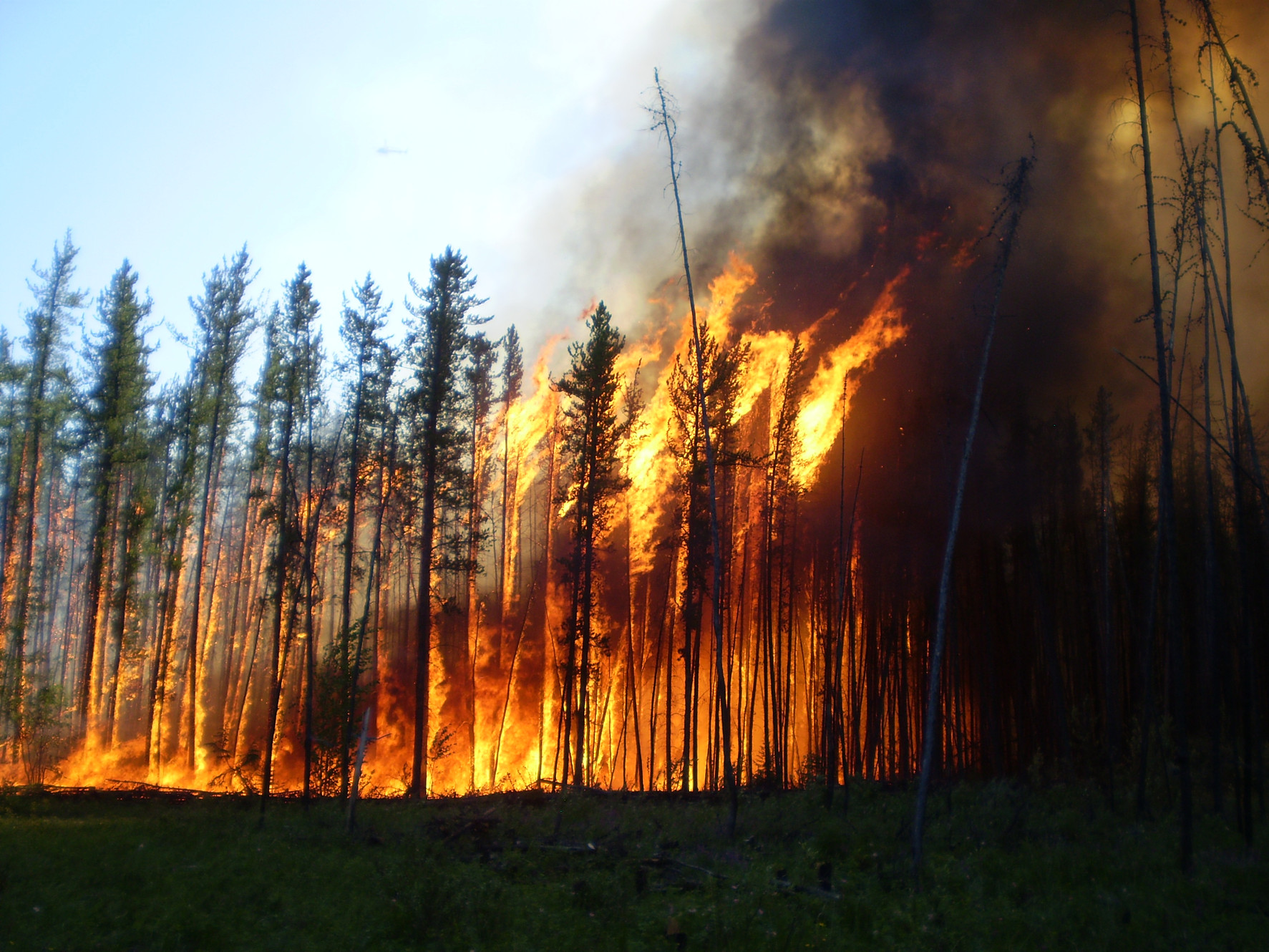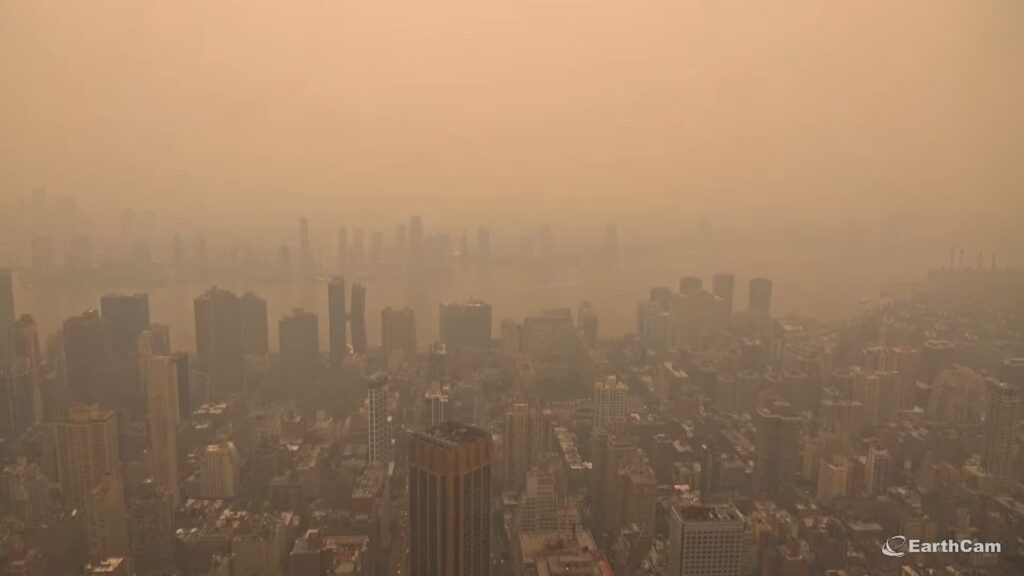The US East Coast is gripped with concern after smoke from the Canadian wildfires drifted south and covered entire cities in a thick, yellow haze. As a result, schools have canceled outdoor activities due to health risks to children. Reduced visibility, air quality alerts, flight delays, and more have impacted major cities. Let’s explore the areas affected by the smoke, the causes behind these Canadian wildfires, and when the situation might improve.
US areas affected by the Canadian wildfires
The US National Weather Service has issued air quality alerts for the entire Atlantic seaboard due to the smoke from Canadian wildfires. Some of the key US areas affected by the smoke from Canadian wildfires include:
- Vermont
- South Carolina
- Ohio
- Kansas
- New York (including New York City)
- Pennsylvania (specifically Bethlehem)
- New Jersey (Harrison)
- Philadelphia
Not a great deal of air quality improvement is anticipated tomorrow as smoke from wildfires in eastern Canada continues to filter southward.
Visit https://t.co/CVx9g8Hm1q for details. pic.twitter.com/Op0shyhAZ1— National Weather Service (@NWS) June 7, 2023
Keep in mind that more areas are affected by the smoke, and the list only signifies the geographical extent. Residents should not spend time outdoors as high levels of fine particulates in the atmosphere pose respiratory risks.
The iconic New York skyline has been shrouded in a veil of smoke, making the city look dystopian, like Blade Runner 2049. For the past three days, NYC had the worst air quality of any city in the world.
🚨🚨🚨BROOOOO WTF is happening in NEW YORK!?!? This can’t be because of the wildfires??? pic.twitter.com/0wYw2Qwe0c
— Kevin – WE THE PEOPLE🦁 (@bambkb) June 8, 2023
According to experts, the air quality in the US areas affected by the Canadian wildfires will gradually improve. Parts of the Northeast may see modest improvements in air quality in a few days.
How did the Canadian wildfires start?
The massive Canadian wildfires have been fueled by warm and dry conditions, which kindled the fires. Due to climate change, record-breaking heat and drought have engulfed much of Canada and North America.
Rising temperatures can intensify lightning strikes which in turn spark a significant portion of the wildfires. In fact, a one-degree Celsius increase in temperature results in approximately 12% more lightning.

While human activities like discarded cigarettes have caused some fires and spark from passing trains, the majority have been ignited by natural factors.
Unfortunately, the Canadian wildfires continue to rage on despite the best efforts to stop them from getting worse. The fires have already burned over 9 million acres which is more than double the amount from last year’s entire fire season.
When will the situation improve?
Canada is currently at its highest level of national preparedness, with international support from firefighting experts arriving to assist. President Joe Biden has deployed over 600 US firefighters to help them out.
Canada is on track to face its worst-ever year of wildfire destruction. Blazes are burning in nearly all Canadian provinces and territories, and federal government officials said their modeling shows increased wildfire risk in most of Canada through August https://t.co/QU7KK6eXkm pic.twitter.com/QF5AAOCb3H
— Reuters (@Reuters) June 6, 2023
Forecasts indicate that there’s about to be a prolonged period of higher-than-normal fire activity throughout Canada’s 2023 wildland fire season. This is mainly due to the ongoing drought and long-range warm temperature projections.
As for US areas, movement of dense smoke is dependent on wind patterns. Some fires may continue burning for the rest of the summer. This poses significant challenges for firefighters, particularly those covering extensive areas.
You can share questions about the US areas affected by the Canadian wildfires. For more content, stay with us here at Spiel Times. Make sure you subscribe to our push notifications and never miss an update. You can also follow us on Spiel Anime, Twitter, Instagram, and YouTube. Until next time!
